The car in front of you slams on the brakes. But you’re busy adjusting your vehicle’s climate settings and don’t notice. Luckily, your SUV is equipped with automatic emergency braking. It flashes a warning on the windshield, blares an alert and then slams on the brakes without your assistance, preventing a crash. A new study finds that vehicles with AEB technology are 49% less likely to be involved in front-to-rear crashes. Yet, a trade group representing a broad list of automakers has sued the federal government over rules that would make sure the technology is a standard feature by 2029.
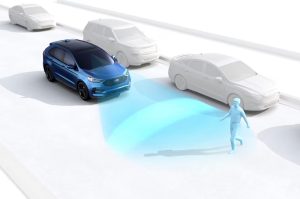
Automakers worked to develop automatic emergency braking, now a trade group is suing the federal government over the feature.
In a rare show of cooperation, the auto industry and the Obama administration agreed to work together to achieve several goals, including new fuel economy and safety standards. Among other things, the industry agreed to a timetable to equip new vehicles with warning systems to prevent front-to-rear crashes. They also agreed to look into what could come next: technology that would automatically apply a vehicle’s brakes if the driver didn’t respond to a potential collision.
A newly released study shows that automatic emergency braking may be one of the biggest safety breakthroughs on the road, reducing front-to-rear crashes on vehicles equipped with the technology by 49%. That adds more data to back the claims made by the National Highway Traffic Safety Administration last year that AEB would save at least 362 lives annually, and prevent 24,000 injuries were it to be made standard. Safety groups believe those numbers are low.
After eight years of discussions with automakers, NHTSA last year set a target date of making AEB standard on all vehicles sold in the U.S. by 2029. The original goal that both the feds and automakers agreed on had been 2022. But that was repeatedly pushed back. Now, despite the fact that dozens of current models offer the technology, an auto industry trade group has sued to block the Biden-era rule. And they are hoping that the anti-regulatory Trump administration will itself move to block implementation.
What is AEB?
Automatic emergency braking relies on various sensors – typical front-facing radar and cameras, though laser-based LiDAR can also be used. It constantly monitors the traffic in front of your vehicle, among other things measuring the speed differential. The technology is designed to watch for a potential crash, perhaps because the car immediately ahead has slammed on its brakes.
If so, the system will sound an alert and flash a warning, most likely a bright yellow/orange rectangle, on your windshield. If you don’t immediately respond, AEB then will apply your brakes automatically, aggressively enough to prevent or, at the least reduce the damage from, a crash.
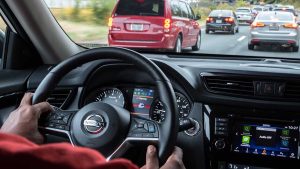
A newly released study shows that automatic emergency braking may be one of the biggest safety breakthroughs on the road.
Low-speed versions, such as Subaru’s Eyesight, were first introduced nearly three decades ago. Some simply sounded a warning in the event of a possible crash, hoping drivers would then respond immediately. Others, like Eyesight, were able to step in and apply brakes at relatively low speeds, often preventing fender-benders during rush hour crawls.
The new rules enacted by NHTSA last year took things up a big notch, Federal Motor Vehicle Safety Standard 127, or FMVSS 127, would require automatic braking in a “crash imminent situation,” at higher speeds involving pedestrians and bicycles, as well as other vehicles. And it would require the technology be installed on all vehicles by 2029.
How well does AEB work?
Quite well, according to safety advocates. “Countless NTSB research studies and crash investigations show that automatic emergency braking can save lives,” Jennifer Homendy, then the National Transportation Safety Board chair, wrote last April.
NHTSA estimated at least 362 lives a year would be saved with AEB on all vehicles. Those numbers are quite low, according to various experts. A new study appears to back that up.
On average, AEB technology can prevent 49% of front-to-rear crashes, according to the report by the Partnership for Analytics Research in Traffic Safety, or PARTS. If anything, “There is a significant improvement in AEB effectiveness in newer generations of the technology,” said a summary of the report. It found auto braking system worked to prevent crashes 52% of the time in vehicles from model years 2021 to 2023.
More Auto Safety News
- Ford Looks to Address Quality Issues with New Leader
- Tesla is America’s Deadliest Automotive Brand, New Study Shows
- Ram Recall is 44th This Year for Stellantis
What is the auto industry doing?
NHTSA estimates implementing the AEB rules would cost the industry about $354 million, a figure automakers claim is low. The rules “would significantly increase costs,” the Alliance for Automotive Innovation, an industry group representing auto manufacturers and suppliers, told NHTSA. The “proposed phase-in schedule,” it said, “may require redesigns outside of the normal product development cycle.”
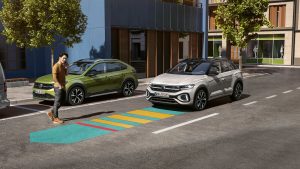
NHTSA estimates implementing the AEB rules would cost the industry about $354 million, a figure automakers claim is low.
Labeling the final rules implemented under Biden as “flawed,” the Alliance filed a federal lawsuit hoping to block implementation. It may also get help from the new Trump administration which has already moved to eliminate fuel economy standards and other automotive regulations. In a letter to the new president, the trade group asked him “to re-open the AEB rules.”
The Alliance said the industry has so far spent over $1 billion to develop AEB technology and, somewhat ironically, it insisted in a statement last month that the lawsuit should not be interpreted as opposition to AEB, a lack of confidence in the technology, or an objection to the widest possible implementation of AEB across the entire US vehicle fleet.” Quite the contrary, it added, “this litigation is about ensuring a rule that maximizes the safety of drivers and pedestrians and is technologically feasible.”
What next?
NHTSA has rejected the industry’s request to rethink the AEB rules. And safety advocates are pushing back, as well.
In a statement, Consumer Reports said it “strongly supports” the rule. William Wallace, CR’s director of safety advocacy, said, “It is profoundly disappointing that automakers are suing to block this lifesaving automatic emergency braking rule. Car companies have brought impressive safety technology to our roads, but AEB performance among new vehicle models is uneven. This rule is needed because everyone on our roads should be able to benefit from automatic emergency braking systems that meet reasonable minimum standards.”
“The AEB Rule is the most impactful highway safety regulation issued in years,” echoed Cathy Chase, president of Advocates for Highway and Auto Safety, in a statement.
Critics contend the industry simply doesn’t want to invest the necessary dollars, especially in low-end vehicles where profit margins are minimal. They also contend that automakers might still make AEB widely available – but as a costly option on all but high-cost product lines.
The new study by PARTS is likely to bolster safety advocates’ argument on the value of AEB. But even though it’s unclear how – or when –the courts might respond, that may not matter. The final word could come from the anti-regulatory-minded Trump, bolstered by Elon Musk, the Tesla CEO who has been spearheading the new president’s assault on government rules.

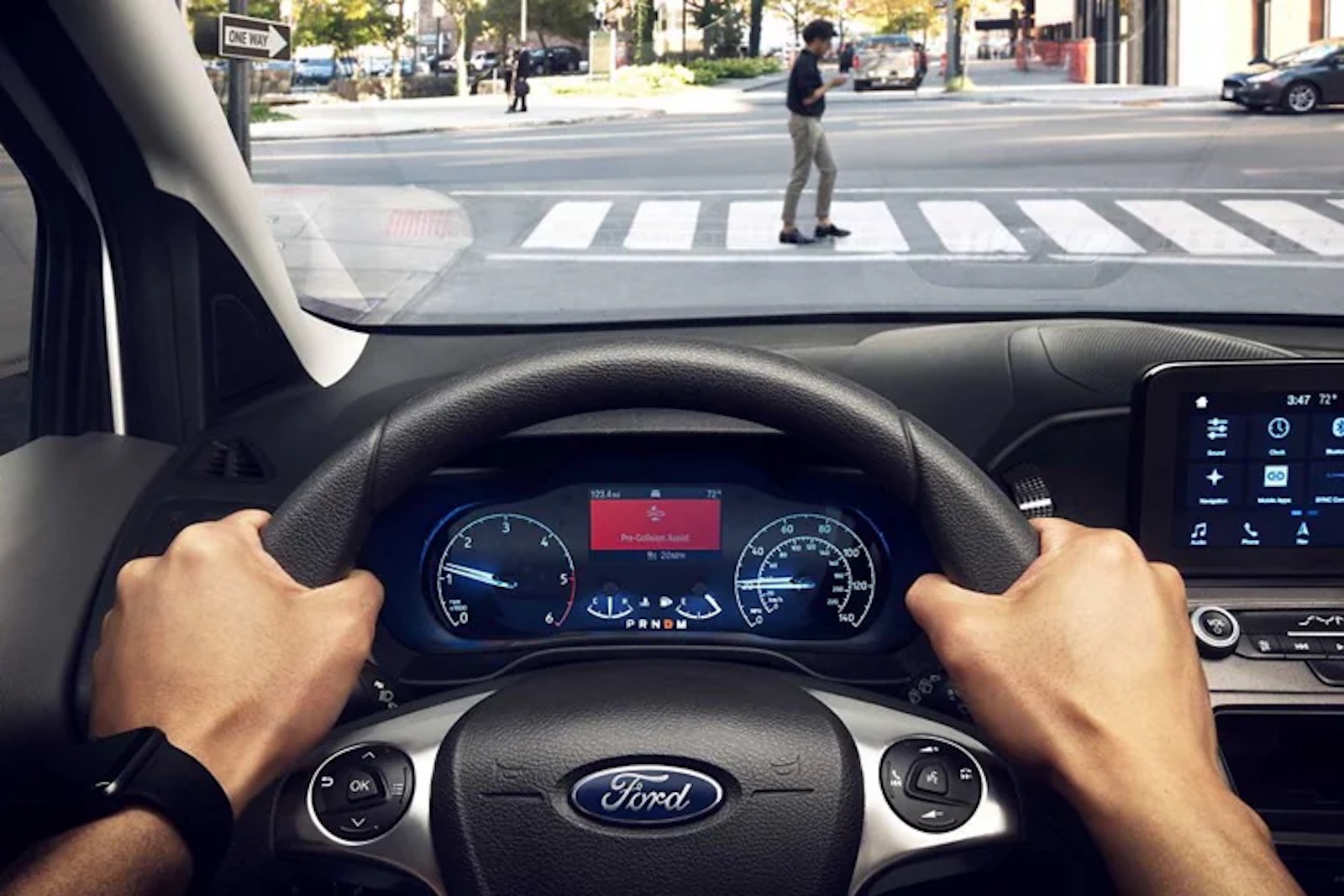
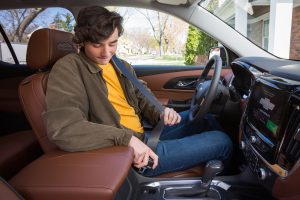

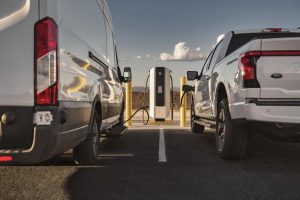
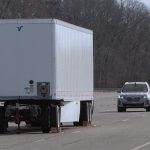



What the article misses is the pushback is on the higher speed requirement which is beyond current technology and not likely capable in the timeframe
Some models already have it and I’m impressed how well it works.